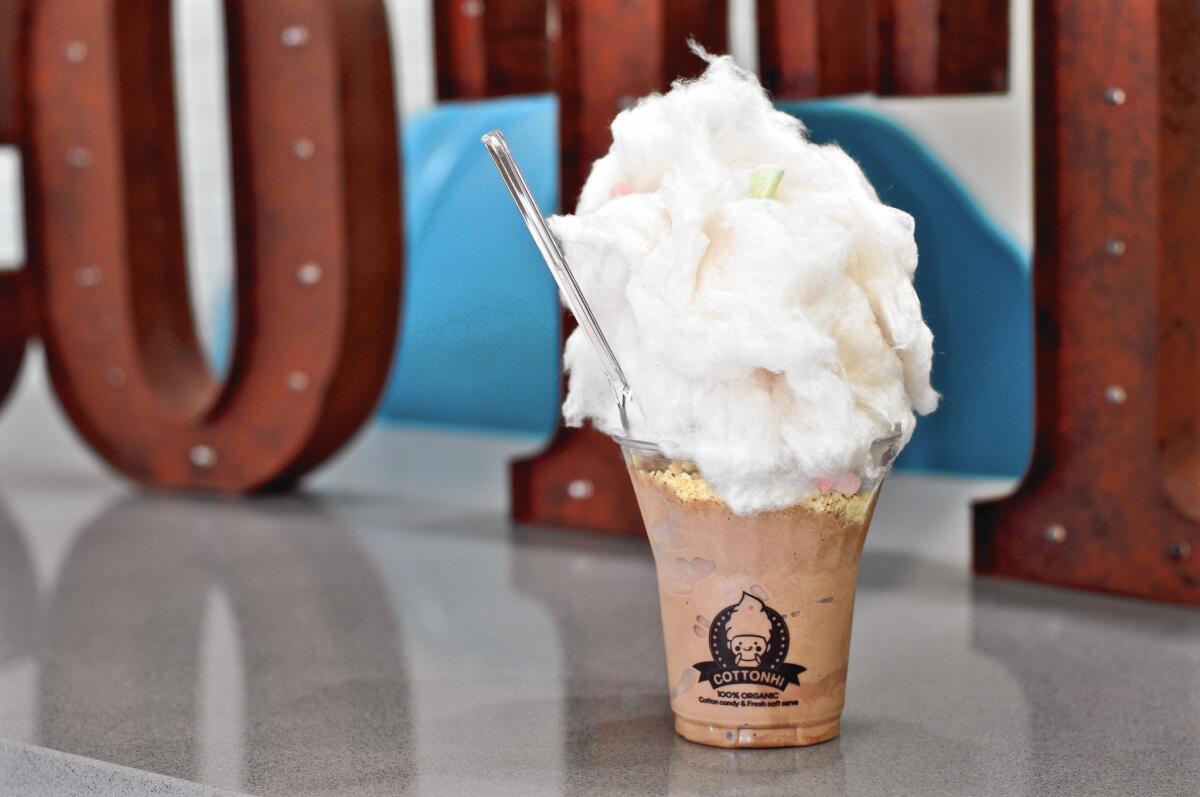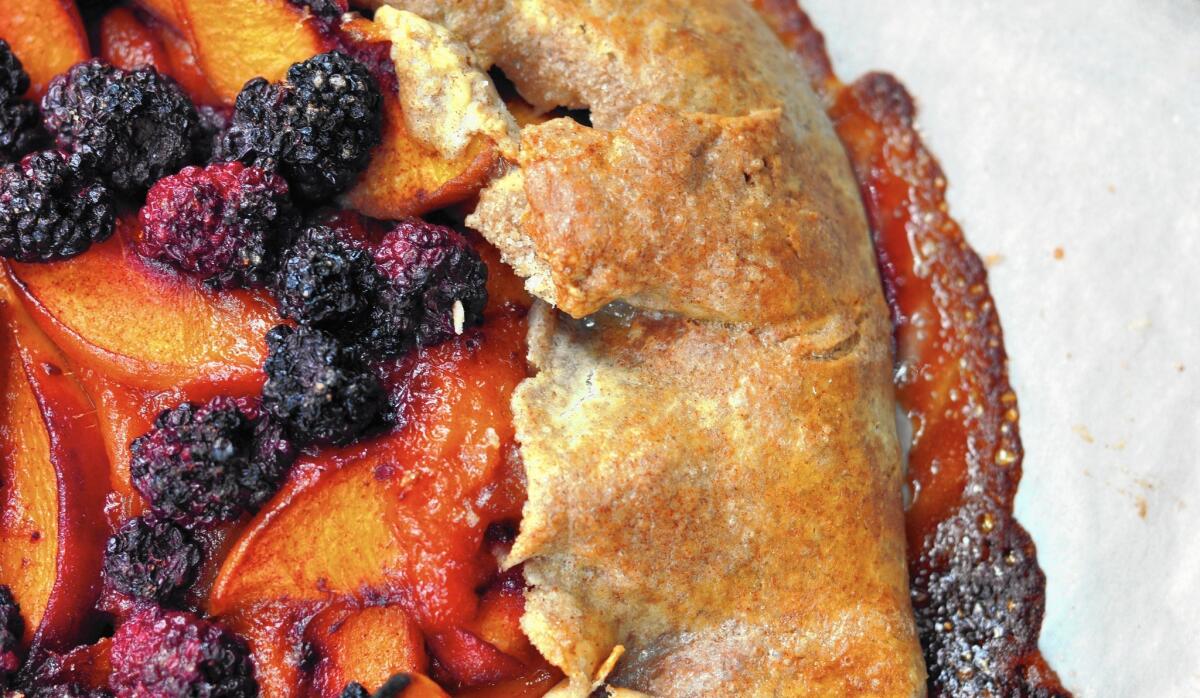CottonHi cotton candy ice cream, Nam Prik hot sauce and the joy of galettes

- Share via
Cotton candy ice cream: The fiends behind CottonHi are scarcely the first to put cotton candy on their ice cream — the combination is part of the repertoire of Momofuku’s Christina Tosi, among other pastry chefs. But the Koreatown dessert parlor, in the same strip mall as fried chicken specialist Kyochon and all-you-can-eat Korean barbecue baron Hae Jang Chon, is a place you wish you could gallop up to on a pink unicorn; where the soft-serve ice cream is not just crowned with pink swirls of cotton candy but also sprinkled with marshmallow treats plucked straight out of a Lucky Charms box and mined with a spoonful of explosively fizzy Pop Rocks, if that’s the way you roll. If there has ever been a customer on a busy afternoon who has failed to Instagram her sparkly sweet, I have yet to meet her. The cotton candy is tinted with lemonade, strawberry, coffee and mint, among other things, and the ice cream is flavored with chocolate or green tea. An extra buck and a half gets you a shot of cold-brewed coffee for a kind of Candy Land affogato. More important, the add-on includes a tiny lab pipette filled with coffee that you can drip onto the confection: The cotton candy writhes into nothingness like the wicked witch in “The Wizard of Oz.”
SIGN UP for Jonathan Gold’s Counter Intelligence dining newsletter >>
Nam Prik: Wimpy hot sauce is for, well, wimps. But a great hot sauce doesn’t have to be so hot that it gives the sensation of the lower half of your face melting away. It should be somewhere in the middle of that and whatever it is you call the other end of the spectrum. Mild, maybe. Ideally, the heat should be assertive, but not bullying. Nam Prik, a new hot sauce made in Torrance by senior financial-analyst-turned-hot-sauce-maker Erick Yi, lands somewhere in the middle of DEFCON 1-level hot and that wimpy stuff. Yi has absolutely no culinary background: The sauce was developed from Yi’s aunt’s recipe, made with fish sauce, vinegar, garlic, chile and sugar, and it took him 18 months of experimenting in his apartment kitchen to get the recipe right. The flavor is bright without being mouth-numbing, with a zing that will widen your eyes but not make them water. You may feel the need to put it on fried rice, scrambled eggs, tacos, avocado toast — even potato chips. Could this be the new Sriracha? Maybe so.

The joy of galettes: If you grow up in Iowa, you eat a lot of pie. You make a lot of it too, whether you want to or not, depending on issues of berry crop and electoral cycle. It must be said that in this world there is too much bad pie, regardless of where you are: too many soggy crusts, too much cornstarch, too much sugar. But galettes, the free-form version of pie in which you fold dough up around a mass of filling and omit the pie dish altogether — these can be at once liberating and revelatory. Galettes are simple to make, sound way fancier than they are, and are rustic in the way that your mother’s pie would have been if she’d secretly trained in Spago’s pastry kitchen. (See: Nancy Silverton.) Try using some whole grain flour and lots of butter in the crust, seasonal fruit, not too much sugar and a bit of flour (no cornstarch). Put the whole thing on a parchment-lined sheet pan and bake until it’s got as much color and caramelization as you can stand. Does this make the election results more palatable? Sure, it does: Soggy pie makes nobody happy.
More to Read
Eat your way across L.A.
Get our weekly Tasting Notes newsletter for reviews, news and more.
You may occasionally receive promotional content from the Los Angeles Times.










